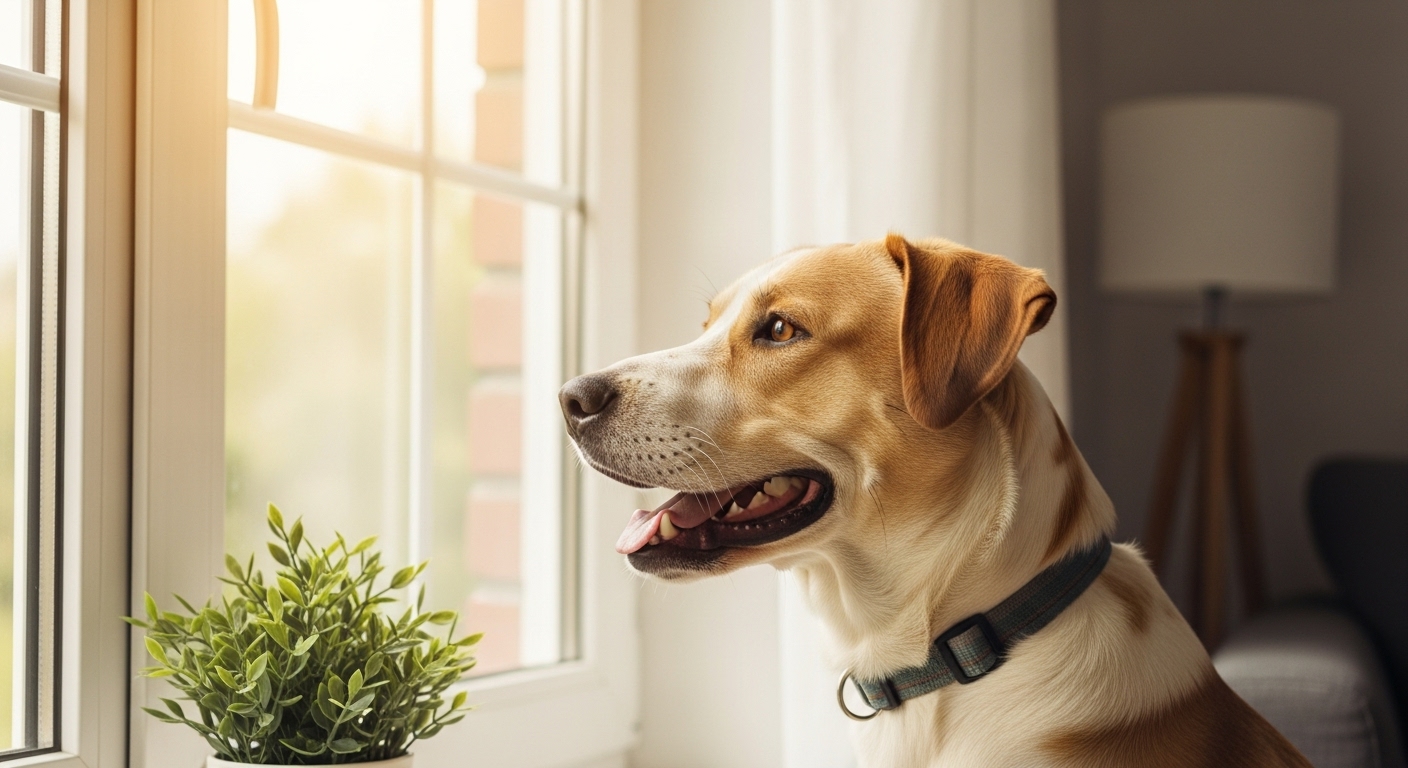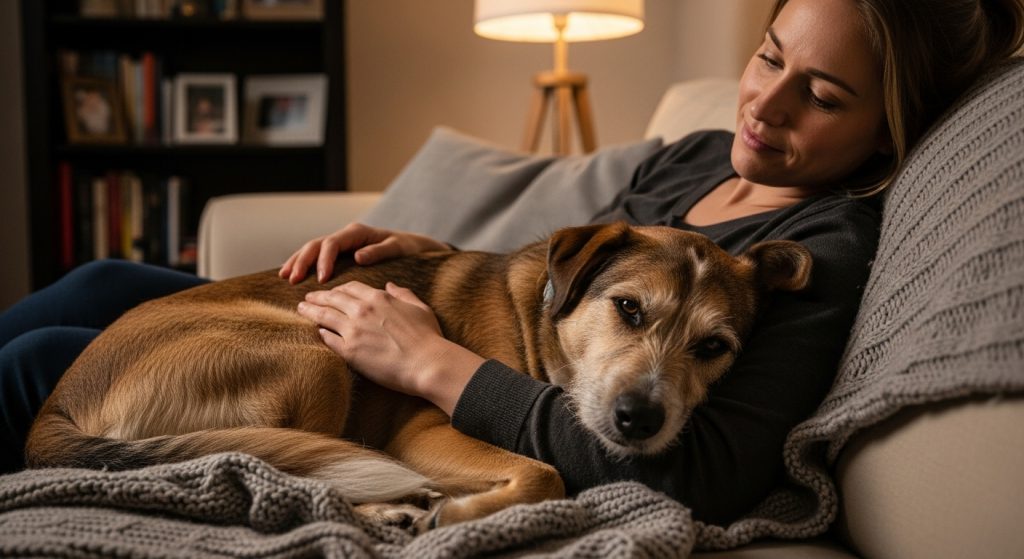Bringing a rescue dog into your home is an act of compassion that changes two lives — yours and your dog’s. But while it’s exciting to welcome a new furry friend, remember that rescue dogs often come with emotional baggage. They may have experienced neglect, fear, or instability, and stepping into a brand-new home can be overwhelming.
The good news? With time, patience, and the right environment, any rescue dog can adapt beautifully. This guide will walk you through how to help your rescue dog settle in — from day one to full confidence.
You’ll learn practical tips about creating a safe space, building trust, and establishing positive daily routines to make your dog feel secure and loved.
Creating a Safe and Welcoming Space
Set Up a “Comfort Zone”
Before your rescue dog arrives, prepare a quiet and cozy corner where they can retreat. This should include:
-
A soft bed or crate with a blanket
-
A water bowl and a few chew-safe toys
-
No loud noises or heavy foot traffic nearby
This comfort zone gives your dog control — a place to decompress and feel protected. Avoid forcing interaction in the early days. Let your dog approach you on their terms.
Add Familiar Scents and Soft Lighting
Dogs rely heavily on smell. Introduce calming scents such as lavender or chamomile using a pet-safe diffuser. Avoid strong perfumes or chemical cleaners that might trigger anxiety.
Dim lighting, gentle music, or even white noise can help drown out startling sounds.
Limit Visitors at First
While friends might be eager to meet your new rescue, keep visits to a minimum initially. Too much stimulation can overwhelm your dog. Gradually introduce visitors once your dog begins showing curiosity and calmness.
Bonus Tip: Routine Builds Comfort
Dogs thrive on routine. Establish consistent feeding, walking, and bedtime schedules right away. Predictability helps them understand that this new home is stable and safe.
Building Trust Through Patience and Positive Reinforcement
Step One: Earn Their Trust, Don’t Demand It
Your rescue dog might be wary of human contact, sudden movements, or raised voices. Trust takes time — sometimes weeks or even months.
The key? Be calm, gentle, and predictable. Move slowly, speak softly, and let your dog come to you.
Avoid direct staring at first (dogs see this as a challenge). Sit sideways or at a lower level to appear non-threatening.
Step Two: Use Positive Reinforcement
Instead of punishing fearful behavior, reward bravery and calmness. Offer treats or praise when your dog explores, approaches you, or obeys simple commands.
Start with small, achievable actions like sitting quietly or taking food from your hand. Each success helps build confidence.
Use short, upbeat training sessions — no more than 10 minutes — to avoid stress. Remember, consistency matters more than perfection.
Step Three: Read Their Body Language
Rescue dogs communicate through posture and movement. Understanding their signals will guide your approach:
-
Tail tucked: nervous or scared
-
Ears back, lip licking: anxious but curious
-
Tail wagging loosely: relaxed and happy
Recognizing these cues helps you respond appropriately and avoid triggering fear.
Step Four: Encourage Play and Exploration
Play is healing. Simple activities like tug, fetch, or sniffing games stimulate your dog mentally and emotionally.
If your dog is shy, start with gentle sniffing walks rather than structured play. Over time, these sessions foster trust and joy.
💬 Pro Tip: Celebrate small milestones — the first tail wag, the first belly rub, or the first time they nap next to you. Each step shows progress.
Establishing a Balanced Routine for Long-Term Success
a) Keep a Predictable Daily Rhythm
Rescue dogs thrive when life feels consistent. Maintain regular meal times, walks, and bedtime. Predictability reduces anxiety and prevents behavioral issues.
If you work long hours, consider a dog walker or a neighbor check-in to avoid long stretches of isolation.
b) Introduce Training and Socialization Gradually
Training builds structure and strengthens the bond between you and your rescue dog.
Start with basic commands like sit, stay, and come. Use positive reinforcement and keep sessions short and enjoyable.
Once your dog feels secure at home, begin gentle socialization with other dogs and people. Dog parks may be too stimulating at first — start with quiet walks near calm pets.
c) Prioritize Grooming and Health
Regular grooming builds trust and keeps your dog healthy. Brush gently, check paws, and introduce bathing slowly.
Schedule vet visits early to ensure vaccinations and health checks are up to date.
If your dog shows fear toward grooming tools, desensitize gradually: let them sniff brushes, reward calm behavior, and stop before stress builds.
d) Foster Emotional Connection
Cuddling, gentle massages, and quiet together-time can be transformative. Rescue dogs crave affection once they feel safe enough to accept it.
Speak in a soothing tone, make eye contact softly, and smile — dogs can sense kindness.
Over time, your dog will begin to associate you with comfort, safety, and love.
e) Expect Setbacks — and Keep Going
Adjusting isn’t a straight line. Your rescue dog might regress or act out during stressful moments. Stay patient, stay consistent, and avoid frustration.
With every challenge overcome, your relationship deepens. Remember: progress, not perfection.
Love Transforms Everything
Helping rescue dogs adjust to their new home environment takes empathy, patience, and time — but the reward is beyond measure.
The moment your once-fearful rescue dog wags its tail with confidence or falls asleep peacefully in your lap, you’ll know every effort was worth it.
By creating a calm space, building trust through positive reinforcement, and maintaining a steady routine, you’ll help your dog rediscover what it means to be safe, loved, and truly home.




